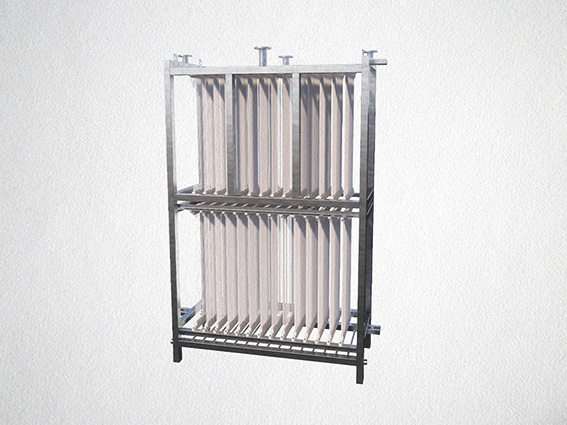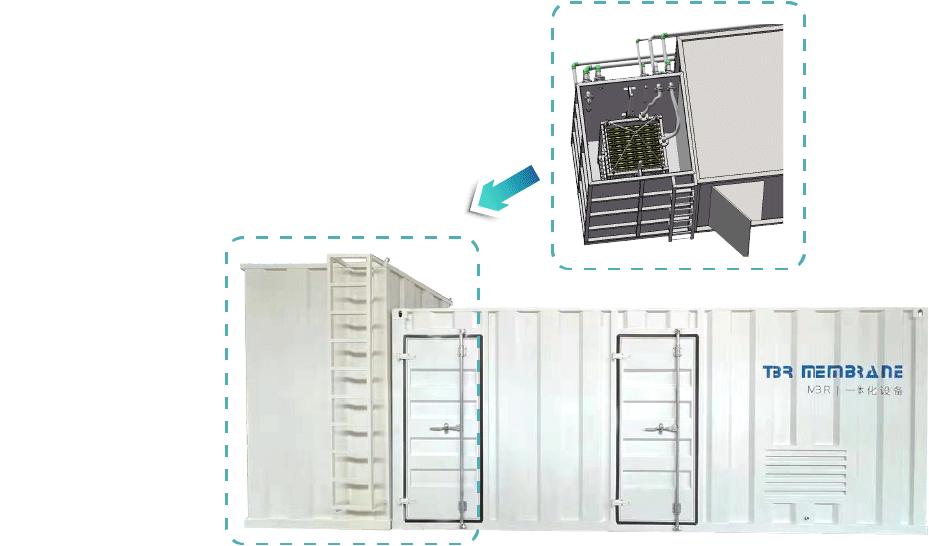
MBRIntroduction to Membrane Technology
TBR MEMBRANE has the industry's trustworthy MEMBRANE technology, combined with the spirit of innovation, is committed to developing high-quality MBR MEMBRANE products.
We have developed new MBR technology to solve the challenges of productivity, footprint, ease of operation and energy saving.
Our MBR systems combine proven MBR technology with biological treatment for municipal, commercial and industrial wastewater treatment.
At the same time, the technical team builds on years of MBR engineering experience to provide the most advanced MBR solutions to date.
MBR(Membrane bioreactor) is a new water treatment technology combining membrane separation technology and biotechnology. It is installed in the MBR tank, replacing the sedimentation, filtration and disinfection at the end of the sewage plant, while integrating the traditional aeration, secondary sedimentation tank, sand filtration and other processes into a single process.
The microfiltration membrane intercepts the microbial floc and suspended matter in the activated sludge mixture, so as to maintain high biological concentration and prolong the residence time of organic solids in the bioreactor, which greatly improves the oxidation efficiency of microorganisms to organic matter and can obtain high quality effluent water quality.
Superior filtration function and high efficiency decomposition biological characteristics, improve effluent quality, but also reduce the sewage plant area and save half of the waste sludge.

Through research in the research institute and combined with practical experience, our company independently develops the integrated equipment of T-membrane series to replace the traditional technology and solve the difficult problems in water treatment with emerging technologies.


Product features
The aerobic colony was established
Facultative anaerobic bacteria is the main component of facultative anaerobic sludge, and the degradation of organic matter is completed by forming sludge with higher concentration under the action of facultative anaerobic bacteria. Macromolecular organic pollutants are gradually degraded into small molecular organic matter, and finally oxidized and decomposed into stable inorganic substances such as carbon dioxide and water.
Since the formation of facultative anaerobes does not require the guarantee of dissolved oxygen, power consumption is reduced. The main role of aeration is to scour and shock the membrane, and the dissolved oxygen generated at the same time is just used to oxidize part of the small molecular organic matter and maintain the dissolved oxygen value of the water.
Sewage sludge synchronous treatment (organic sludge near zero discharge)
At the same time of sewage treatment and reuse, the amount of organic sludge is greatly reduced, and basically no discharge of organic surplus sludge can be realized, which successfully solves the problem of disposal of surplus sludge.
Under the action of facultative anaerobic bacteria, part of the newly added organic matter is decomposed into small molecular organic matter, which is then oxidized and decomposed into INORGANIC substances such as CO2 and H2O. The other part is synthesized as a cell. Under the condition of low sludge load, the cells, as nutrients, were partially decomposed into small molecular organic matter under the action of facultative anaerobic bacteria, and then oxidized into inorganic matter such as CO2 and H2O. The other part is made into new cells. And so on, under the condition of low sludge load, the new cells continue to metabolize decomposition and synthesis as nutrients under the action of facultative anaerobic bacteria, until finally all the cells metabolize into INORGANIC substances such as CO2 and H2O.
Simultaneous denitrification (anAMmox)
Reaction mechanism of ANAMmox: under certain conditions, nitrification produces a large amount of NO2- accumulation, anAMmox bacteria first convert NO2- to NH2OH, and then use NH2OH as electron acceptor to oxidize NH4+ to N2H4; N2H4 converts to N2 and provides electrons for the reduction of NO2- to NH2OH, and a small amount of NO2- is oxidized to NO3- in the experiment. As the short-cut nitrification and anAMmox are realized, the oxygen supply is reduced, the energy consumption of aeration and the carbon source required for denitrification are greatly reduced, thus achieving the purpose of efficient denitrification. In practice, not only the nutrient and environmental conditions should be optimized to promote the growth of anAMmox bacteria, but also the sedimentation performance of the bacteria and the structure of the reactor should be improved to promote the effective retention of functional bacteria.
